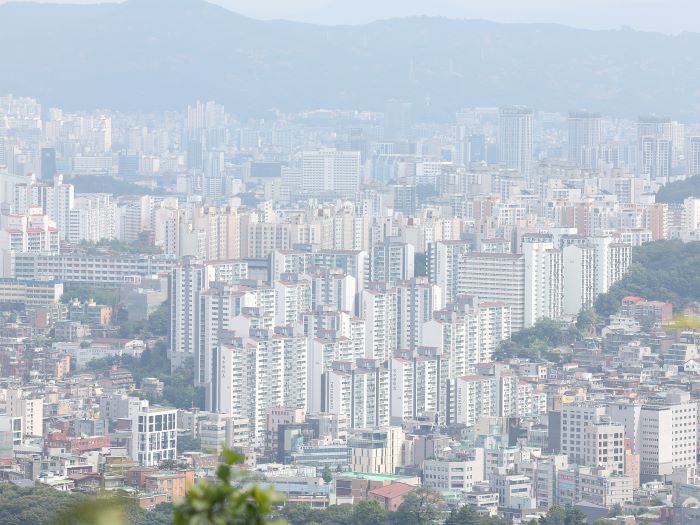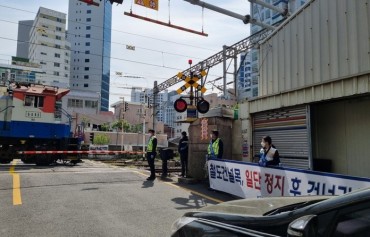
A view of an apartment in Seoul from the Namsan Observatory in Seoul, South Korea. (Image courtesy of Yonhap)
SEOUL, Jan. 30 (Korea Bizwire) – The number of South Koreans who moved to different residences in the country fell to the lowest level in about 50 years last year, data showed Tuesday, amid population aging and a housing market slump.
The number of people who changed their residences inched down 0.4 percent on-year to 6.13 million in 2023, according to the data compiled by Statistics Korea.
It is the smallest number since 1974, when about 5.29 million people changed their residences.
The population mobility rate — the percentage of those relocating per 100 people — came to 12 percent last year, unchanged from a year earlier.
The 2023 reading is the lowest since 1972, when the figure came to 11 percent.
The number of people who changed residences decreased for the third year in a row last year. In 2022, the figure dropped by the largest margin in nearly 50 years, or 14.7 percent on-year, to 6.15 million.
The decrease in the population mobility was mainly attributable to the country’s aging population, as young people, in general, relocate their homes more often than older adults.
The population mobility rate came to over 20 percent among those in their 20s and 30s, while the rate for those in their 60s and older came below 7 percent, according to the data.
The decline also came as people refrained from purchasing new homes amid economic uncertainties and high interest rates.
The Bank of Korea has kept its policy rate unchanged at 3.5 percent since January 2023 after raising it by a cumulative 300 basis points to fight inflation. It is the highest level since 2008.
By region, Seoul saw a net outflow of 31,000 people last year, and the southeastern port city of Busan reported a net outflow of 11,000 people in 2023.
Seoul has experienced a net outflow of its population since 1990.
But Gyeonggi Province, which surrounds the capital, and the western port city of Incheon posted net inflows of 45,000 and 34,000, respectively. The South Jeolla Province also had 16,000 more people coming in last year, the data showed.
(Yonhap)






